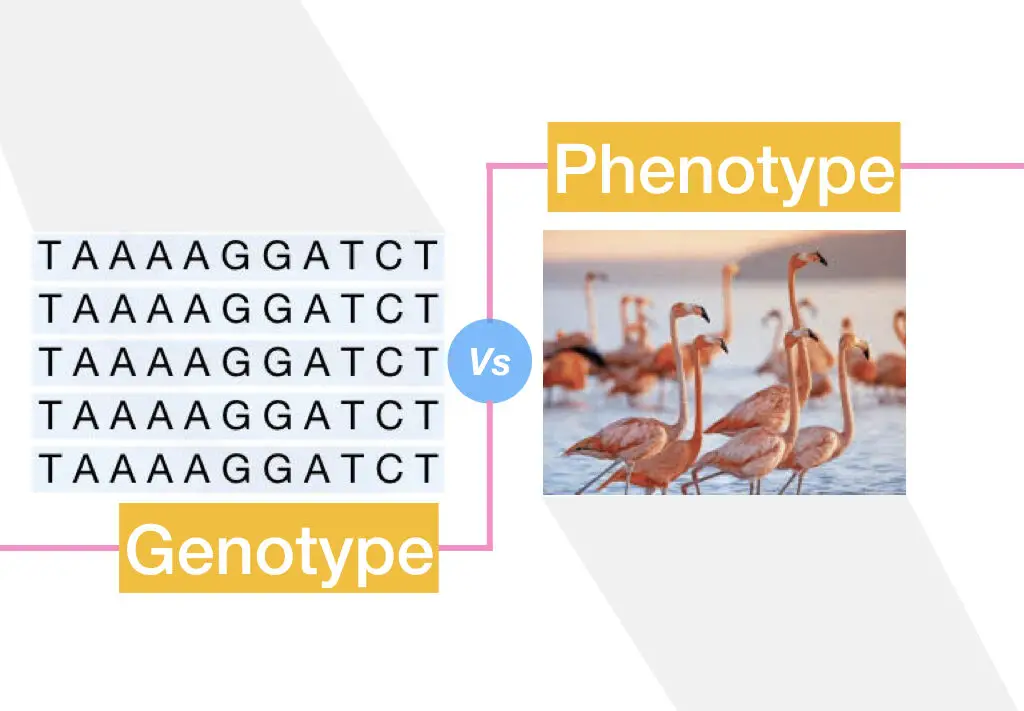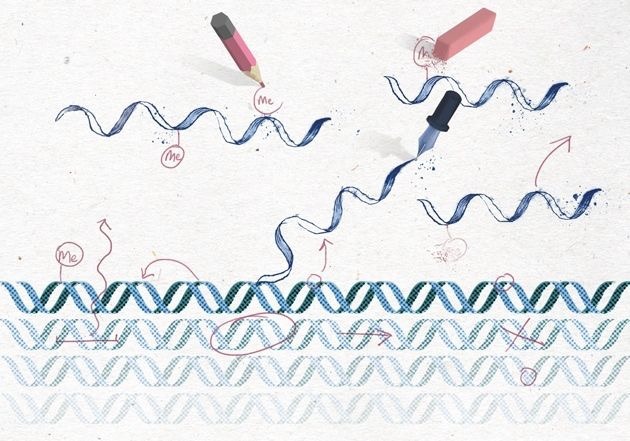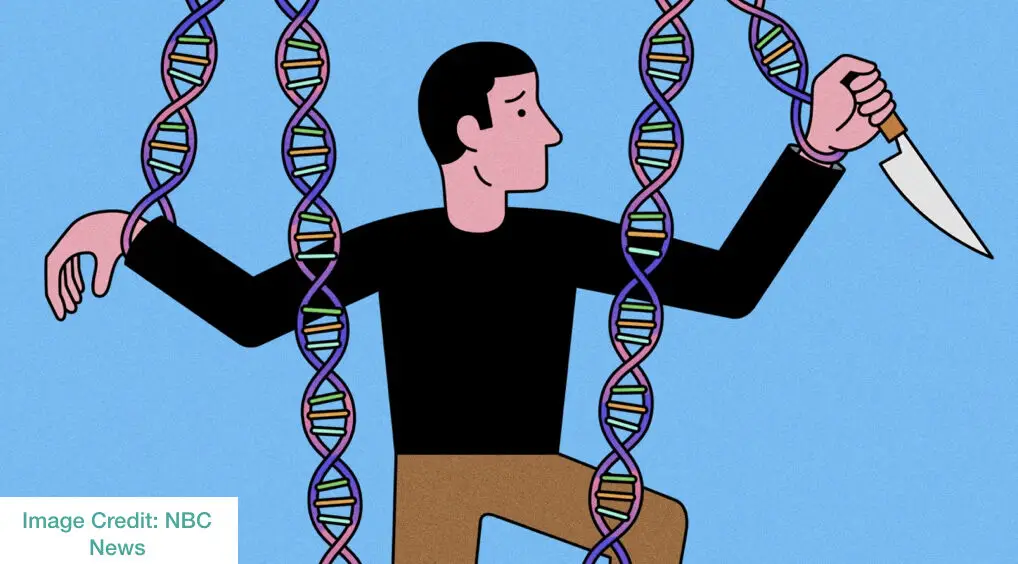“Behavior genetics is a branch of psychology or interdisciplinary genetics that deals with the study of gene- environmental interaction and its association with human or animal behaviors/traits.“
You sometimes wonder why my behavior is different when you get angry, Why I am like my father- angry & aggressive and why my sister is different. Perhaps you get these behavioral traits from your father or perhaps not! In another scenario,
Parents of a mentally retarded, intellectually challenged or down syndrome child think that why their child is different and why his or her behavior isn’t normal! Even though they don’t have any genetic abnormality, why does their child suffer from one!
Those questions are common for thousands and yet a valid one, several behavioral traits or phenotypes are governed by genes.
Meaning, certain behavior is genetic and can be inherited, however, not all do. Behavior genetics is a complex field of study including so many factors, pathways and metabolic activities. Henceforth, it is yet not fully studied and explored.
On-going research in various fields of genetics deciphers that traits like mental, cognitive, intellectual and abnormal behavior may have a complex genetic foundation.
Genetic is the study of genes, DNA and chromosomes. Put simply, a gene manufacture a protein that helps in metabolic activity and therefore it’s important.
However, recent advances in genetic science describe that variations in genes and expression produce separate phenotypes and, sometimes uncommon behavioral problems, for example, cognitive disability in the case of Autism.
Genes interact with the environment and produce a varied degree of phenotypes or traits, some are biochemical while others are behavioral. So what exactly the behavioral traits are? There is any genetic foundation behind it? Are they truly or fully genetic? Let’s find out.
In the present article, we will understand the basics of behavioral traits and the genetic base behind them, if any.
Key Topics:
What is behavior genetics?
In the later part of the 19th century, Francis Galton explained the term ‘behavioral genetics’. However, the topic got more clarity after John L Fuller & William Robert Thompson (1960) Published a book named “Behavior Genetics.”
Psychology definition of behavioral genetics:
Psychology defines behavior genetics as, “the study of gene-environment interaction and its effect on behavioral traits.”
The biological definition of behavior genetics:
Biology defines behavior genetics as, “ the study of epigenetics, gene-environment interactions using genome-wide association study, SNP analysis or whole-genome sequencing to investigate behavior traits.”
Since the present interdisciplinary topic was more conceptual, a decade before the evolution of revolutionary technologies like whole genome sequencing and genome-wide association studies allowed scientists to screen a huge number of genotypes and their effects and/or outcomes as phenotypes on a vast population.
Furthermore, it also makes possible population-based studies of single or multiple traits and their association with genes. Now, so many genotypes are discovered, whose links with mental and cognitive behaviors are known.
Genetic studies rely on two mechanisms: transcription of genes and expression of genes. Transcription of various genes produces various proteins while the difference in the expression of genes produces variability in traits.
For example, the ACTN3 gene has substantial importance in developing muscle protein because muscle or skeleton cells need more muscle protein than skin or liver cells.
So gene expression has important consideration to produce variability in nature. The whole study of gene expression which has been broadly covered in “epigenetics” has more relevance in behavioral traits and studies.
While the majority of traits associated with ‘uncommon behavior’ are learned, a few are either inherited or are inbuild and commonly observed in specific groups of animals.
For example, walking and talking are learned after birth while rhythmic findings of the nipple are observed by birth. When a baby is born, it immediately starts searching for a nipple, interestingly it’s observed in all mammals.
Nonetheless, walking and talking aren’t inherited traits but have a complex genetic foundation, studies proved. In contrast, ‘rhythmic nipple findings’ do not have any significant genetic base, and/or have not yet been studied, still observed by birth.
For more understanding, you can read this article. I have discussed 8 examples here: 8 examples prove that behavioral traits are genetic.
A classic formulation of ‘Nature vs Nurture’ explains that some traits are universally inherited and are observable while others are learned or developed by interaction with the environment.
Advance studies suggest that animals interacting with the environment also provide another dimension in this scenario. Let’s findout how it happens.
Role of gene-environmental interaction in behavior:

Gene-environment interaction has an important role in survival and variability. The environment here can be anything around a person or animal. For example, polluted atmosphere, jungle, chemical or lab environment.
Depending upon the environment an animal or person living/birth or migrated; their genetics changes to adapt dynamically as per the need. For example, a person needs more melanin in their skin if they are living in higher temperature regions.
The gene-environment interaction though occurs for adaptability, sometimes produces undesirable/unwanted genotypes as well.
(it’s a trial and error process!)
Let’s understand the concept by taking an example,
Lead is hazardous in many ways. A lead-rich environment isn’t advisable for pregnant women as well as for a baby. It can cause miscarriage, stillbirth or premature birth for pregnant women while higher exposure to lead results in autism spectrum disorders in children, studies suggest.
And as mentioned before autism has a significant and proven genetic base, the interaction may either produce mutation in genes or change gene expressions.
Consequently, its (gene-environment) interaction changes the overall behavior in this case.
The animal study, adaptation study, twin study, family study and molecular analysis are several methods used for the gene-environmental study.
Methods to study behavior genetics:
Animal or model organism study:
Experimenting directly on human subjects has been restricted by ethical issues henceforth animals as model organisms are widely used in biological research. Various animal models can be used to investigate the effect of gene-environment interaction.
To serve the purpose, animal models from the same species are tested to investigate various traits under different environmental conditions.
In-depth genomic testing after study can help investigators to understand how animals adapt under different environments, how phenotypes change and thereby consequent effect on genotype.
In addition to this, phenotypes can be altered as per the need by using gene therapies, gene editing and genome alteration technique. Here, the genotype is altered in a controlled environment and its effect can be investigated in vitro in different conditions/environments.
Mice, drosophila, zebrafish, nematodes and house mouse are several common model organisms routinely used. Note that the outcomes of the studies on model organisms only shows probability in context to human.
Family study:
The family study is a potent method to investigate gene-environment interaction thereby genetics of behavior. Parental inheritance and a constant single environment are reasons for common genotypes and behavioral phenotypes among family members.
Using genetic tools and comparative analysis, high-risk genotypes and related behavior or traits can be studied and investigated. Techniques like pedigree analysis further help to determine the risk of running a disorder or ‘bad trait’ in the family.
Investigation of normal, high risk and affect members of the family also aid more power in behavior study.
Nonetheless, controlled experimental setup, breeding experiments and controlled environmental conditions can’t be set up in the case of family studies.
Adaptation study:
The adaptation study is yet another human psychology study that provides insight into how an adverse, disturbing or joyful environment affects one’s mental traits. Further genetic analysis investigation can also provide additional information regarding changes in the genotype associated.
Adaptation studies are relatively less fruitful and less advisable.
Twin study:
A Monozygotic twin study is a well-defined investigation that interprets how similar genotype behaves in a varied environment.
Monozygotic twins have 99% shared genomes, meaning are relatively genetically more related. If shared environments are taken into consideration, it can be interpreted that their behavioral changes are solely due to the environmental differences or interaction of their genotype with the environment.
Genetic studies:
The above-explained methods though are meaningful but are qualitative only, in lay terms, the effect of G*E interaction can’t be measured. However, several genetic tools can do the job.
Genome-wide association study:
Microarray or GWS compares test and control samples or populations, identifies various alleles, investigates genotypes and measures the amount of gene expression.
Under the influence of various environments, variability within different genotypes can be investigated and measured. GWAS tool is more accurate and rapid.
SNP analysis:
SNP is short of Single Nucleotide Polymorphism, described as a single base change within a DNA, gene or genome. Millions of SNPs can be screened and compared among different groups or in different conditions.
Related article: An Introduction To Single Nucleotide Polymorphism (SNP).

Whole-genome sequencing:
The whole genome of an organism can be now sequenced precisely thereby can be compared with another genome, other control or high-risk genome or genome of a person from another environment.
Comparative genomic analysis helps investigate genotypic variations, allelic divergence and phenotypic discrimination.
Wrapping up:
Behavior doesn’t have a whole genetic foundation, yet genes have a pivotal role in behavioral alteration and difference. Gene-environmental interaction is a complex process and can’t be fully studied for human subjects.
In addition to this, polygenic traits are complex in nature as well. The effect of a single gene and the effect of the same gene along with other genes are different. Hence polygenic traits are hard to study.
Notwithstanding, techniques like GWAS and SNP analysis provide substantially great results.
Subscribe to our weekly newsletter for the latest blogs, articles and updates, and never miss the latest product or an exclusive offer.




